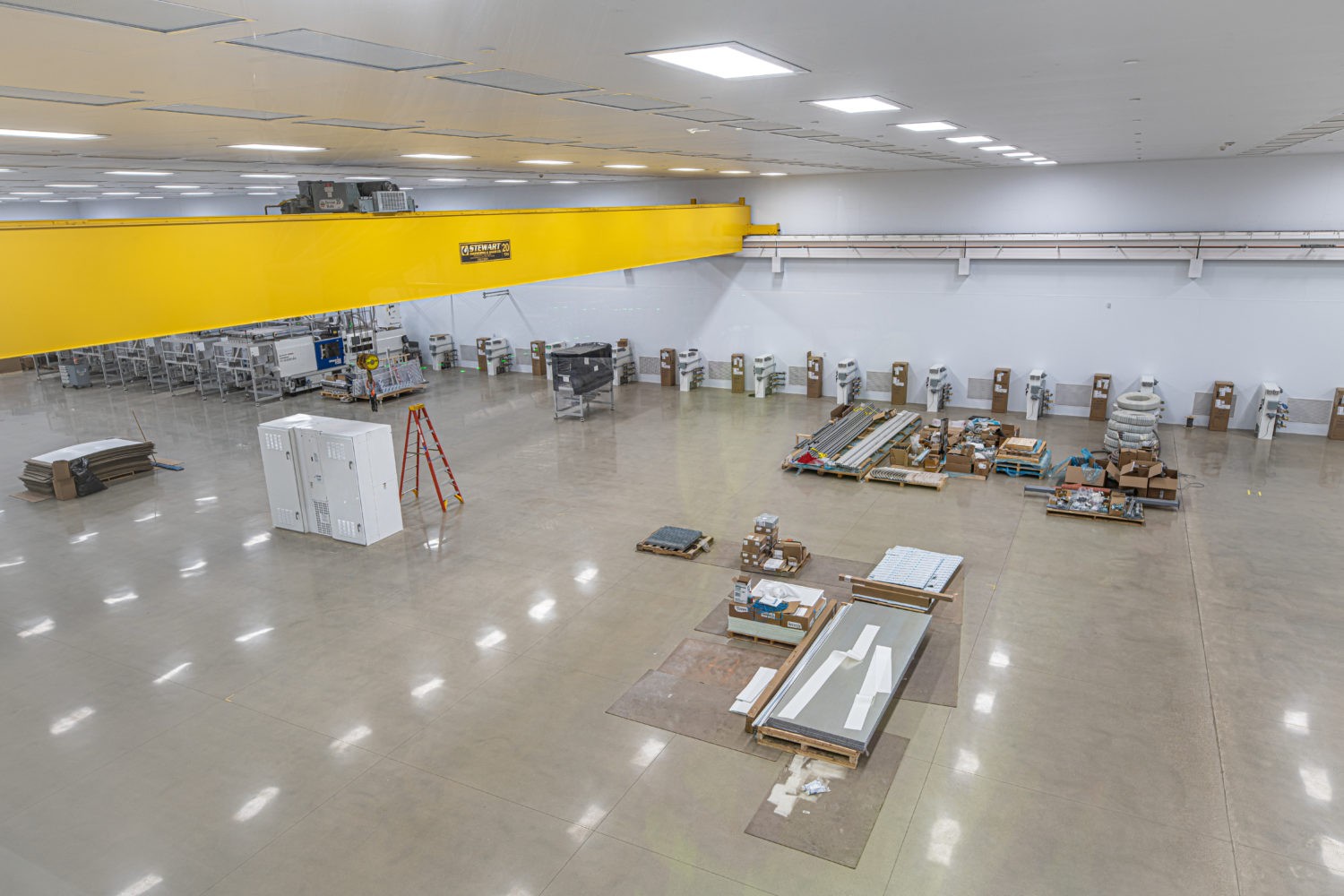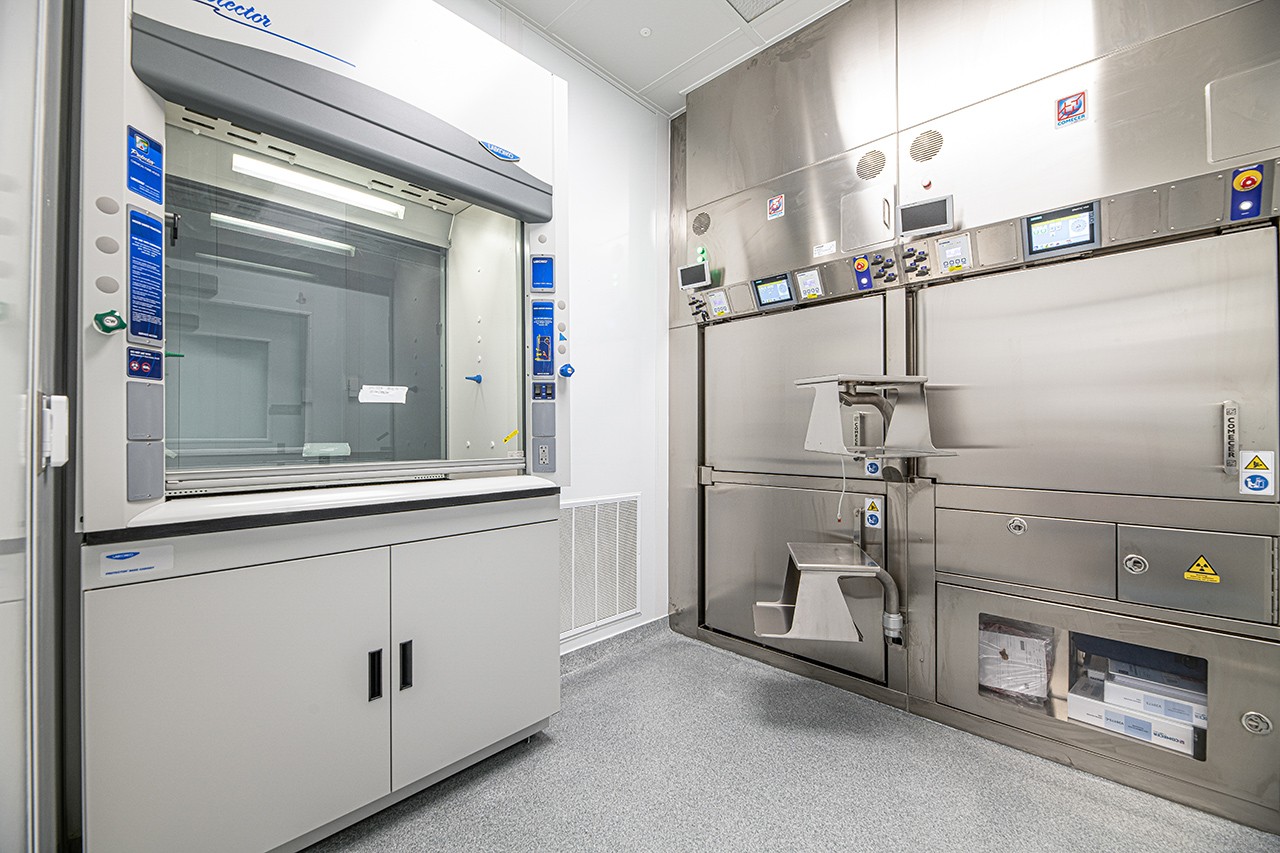Air Changes per Hour are important factors in determining the design and evaluating the performance of a cleanroom. The air changes per hour, airflow pattern, and exchange efficiency all have significant implications on cleanroom performance and cost, which in turn determines the return on investment for a cleanroom.
What are air changes per hour, and how are they accounted for in cleanroom design? We’ll break down the answers to these questions and more.
What are Air Changes Per Hour?
As defined by ISO 146144-4 standards, air changes per hour refers to the number of times per hour the air in a cleanroom is replaced with clean, filtered, and treated air. It’s calculated by dividing the volume of air sent into the cleanroom as a unit of time by the total volume of the cleanroom.
Air Changes Per Hour or Air Change Velocity
Cleanrooms, by definition, require air changes in order to meet air quality requirements for particle count and more. As the environment gets more clean with lower ISO classes, more and more air changes are needed to reach stringent classification standards.
ISO standards express air changes per hour differently for cleanrooms with unidirectional and non-unidirectional airflow.
Non-Unidirectional Airflow = Air Changes Per Hour
Non-unidirectional, or mixed flow, refers to the airflow pattern in a cleanroom. Typically, cleanrooms that fall within ISO Classes 5 and above use this type of airflow. It is sufficient for removing the designated number and size of particles at a regular rate per their classification standard.
For cleanrooms that comply with ISO Classes 4-9, hourly air changes per hour are sufficient to express how many times the air in the cleanroom is completely refreshed. Applications like pharmaceutical, packaging and manufacturing, biosciences and health typically fall in this classification range and comply with air changes per hour as described.
Unidirectional Airflow = Airflow Velocity
As cleanroom classifications become more stringent, the air changes per hour must increase to remove particles and keep the air cleaner. Cleanrooms with unidirectional airflow, typically Class 5 and below, have the strictest cleanroom classifications. To maintain air quality, the air changes per hour is so rapid it is expressed instead as airflow velocity, either in meters per second or feet per minute.
These cleanroom environments must remain extremely clean, so the constant flow of contaminant-free air, either vertically or horizontally, is vital to keep particles from settling on surfaces and maintain classification standards.
Cleanroom applications such as microelectronics, sensor manufacturing, and other sensitive processes must be performed in such environments with strict air quality control and consistent removal of contamination.
Air Changes Per Hour and Cleanroom Classifications
air changes per hour are an essential component of cleanroom classification standards. They make it possible to reach the particle count and size restrictions each class sets. Let’s take a look how air changes per hour and classification are related.
|
ISO 14644-1 Cleanroom Standards |
||||||||
|
Class |
Maximum Allowed Particles (per m3) |
Air Changes Per Hour |
Airflow Velocity (ft/min) |
Ceiling Coverage |
||||
|
≥0.2 µm |
≥0.3 µm |
≥0.5 µm |
≥1 µm |
≥5 µm |
||||
|
ISO 1 |
2.37 |
1.02 |
0.35 |
0.083 |
0.0029 |
360-600 |
60-100 |
90-100% |
|
ISO 2 |
23.7 |
10.2 |
3.5 |
0.83 |
0.029 |
360-600 |
60-100 |
80-100% |
|
ISO 3 |
237 |
102 |
35 |
8.3 |
0.29 |
360-540 |
60-90 |
60-100% |
|
ISO 4 |
2,370 |
1,020 |
352 |
83 |
2.9 |
300-540 |
50-90 |
50-90% |
|
ISO 5 |
23,700 |
10,200 |
3,520 |
832 |
29 |
240-480 |
40-80 |
35-70% |
|
ISO 6 |
237,000 |
102,000 |
35,200 |
8,320 |
293 |
150-240 |
25-40 |
25-40% |
|
ISO 7 |
2.37×106 |
1,020,000 |
352,000 |
83,200 |
2,930 |
60-90 |
10-15 |
15-20% |
|
ISO 8 |
2.37×107 |
1.02×107 |
3,520,000 |
832,000 |
29,300 |
5-48 |
1-8 |
5-15% |
|
ISO 9 |
2.37×108 |
1.02×108 |
35,200,000 |
8,320,000 |
293,000 |
0-25 |
0-5 |
5-10% |
As you can see from the chart above, classes are organized by three major factors: particle size and count, air changes per hour or airflow velocity, and percentage of ceiling coverage. Once the air changes per hour rises above 200, it is better expressed as airflow velocity in feet per minute.
Whats My Air Changes Per Hour?
The best air changes per hour for your cleanroom is the one that allows you to reach the required cleanliness required by your cleanroom classification. The level of activity and actions that introduce contaminants in your specific cleanroom may affect the amount of particles generated, and thus the air changes per hour required to remove them.
Your cleanroom’s air changes per hour describes conditions when the room is in operation, but you may lower the air changes per hour when the cleanroom is not in use to save energy and operation costs.
Designing Cleanrooms to Meet Air Changes Per Hour
Your cleanroom is designed to meet your cleanroom classification. All the systems that support air quality and cleanliness work together to achieve consistency.
To design a cleanroom that meets your classification with adequate air changes per hour, the cleanroom must contain enough fan filter units and a uniform airflow pattern. A greater percentage ceiling coverage of fan filter units is required to reach necessary air changes.
Although the percentage of ceiling coverage for fan filter units isn’t a metric directly referenced by ISO standards, it helps estimate construction costs. What’s most important is that the cleanroom has the systems it needs to thoroughly and consistently change the air to reach its cleanliness requirements.
Upgrading Cleanroom Classifications and Air Changes Per Hour
If you need to upgrade your cleanroom to meet stricter classification standards or adapt your facility to handle a more sensitive project, an important step is to increase or adjust the filtration and air changes per hour to remove more particles of a smaller size from the air.
When moving from ISO Class 7 to ISO Class 6, for example, you’ll need to increase your air changes from 60-90 ACH to 150-240 ACH to filter all but 35,200 particles at 0.5 microns per cubic meter. Consider that, to support this shift, you may need to upgrade your HVAC system.
What’s My Air Changes Per Hour?
The best air changes per hour for your cleanroom is the one that allows you to reach the required cleanliness required by your cleanroom classification. The level of activity and actions that introduce contaminants in your specific cleanroom may affect the amount of particles generated, and thus the air changes per hour required to remove them.
Your cleanroom’s air changes per hour describes conditions when the room is in operation, but you may lower the air changes per hour when the cleanroom is not in use to save energy and operation costs.
Designing Cleanrooms to Meet Air Changes Per Hour
Your cleanroom is designed to meet your cleanroom classification. All the systems that support air quality and cleanliness work together to achieve consistency.
To design a cleanroom that meets your classification with adequate air changes per hour, the cleanroom must contain enough fan filter units and a uniform airflow pattern. A greater percentage ceiling coverage of fan filter units is required to reach necessary air changes.
Although the percentage of ceiling coverage for fan filter units isn’t a metric directly referenced by ISO standards, it helps estimate construction costs. What’s most important is that the cleanroom has the systems it needs to thoroughly and consistently change the air to reach its cleanliness requirements.
Upgrading Cleanroom Classifications and Air Changes Per Hour
If you need to upgrade your cleanroom to meet stricter classification standards or adapt your facility to handle a more sensitive project, an important step is to increase or adjust the filtration and air changes per hour to remove more particles of a smaller size from the air.
When moving from ISO Class 7 to ISO Class 6, for example, you’ll need to increase your air changes from 60-90 ACH to 150-240 ACH to filter all but 35,200 particles at 0.5 microns per cubic meter. Consider that, to support this shift, you may need to upgrade your HVAC system.
Meet Your Classification With Cleanroom Professionals
Think you need to update your cleanroom’s air changes per hour? The cleanroom design experts at Angstrom Technology can help! We can evaluate your space and systems to ensure they’re working effectively, and help you upgrade them to change air more efficiently. To learn more, give us a call or reach out online.

PHARMACEUTICAL
CLEANROOM

Advanced
Radiopharmaceuticals




